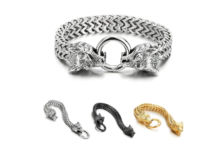First, the history of Glitter Powder: Glitter Powder was first created by the United States Glitter Company in 1963. There are more than 40 years of history. China has emerged in the last decade. By https://galglitter.com/ to share more details.
Glitter Powder is commonly known as glitter, gold onion flakes, glitter powder, etc. Silver, gold, color, seven color, and laser film are referred to as the “Glitter Powder” of a single species.
Second, the basic characteristics of Glitter Powder: Glitter Powder shapes are hexagonal, square (quadrilateral), round, triangular, five-star, rectangular and
Some special shapes, if necessary, can also be customized according to customer requirements to other special shapes. Glitter Powder is available in aluminum foil (aluminum material), PET plastic film, PVC plastic film, polyester film, etc. Among them, Glitter Powder made of aluminum is resistant to high temperatures, and the brightness and color will not change under a high temperature of about 280℃; PET plastic film is resistant to a temperature of about 180℃; PVC plastic film is resistant to a temperature of about 75℃.
In the production process of Glitter Powder, the actual temperature resistance of Glitter Powder is also related to the dwell time in the machinery and the thickness of the processed products.
The shorter the mechanical dwell time, the better (no fading), and the thinner the thickness of the product, the better (no fading) because the heat can be easily evaporated this way.
Third, the category of Glitter Powder: Glitter Powder has many colors, but currently on the market can be divided into five main categories: silver and white, gold, and color.
Colorful and colorful, and laser. Glitter Powder also varies by industry, and the thickness in the production of different; currently, on the market, there are 18μm, 25μm, 35μm, 50μm, 188μm, and other products of different thicknesses.
Fourth, the basic production process of Glitter Powder: first of all, the surface treatment of raw materials, then vacuum aluminizing, on the protective layer, on the color, and then. Also galglitter Wholesale’s nail polish powder is perfect for this scenario
Slitting, processing, cutting molding, after post-treatment finished products.
Sixth, the application of Glitter Powder: Glitter Powder has a wide range of applications, mainly focused on printing and dyeing, textile printing, screen printing, glass, cosmetics, oil
Glitter Powder can be mixed with paints, glues, inks, coatings, plastics, pulp, glass pulp, and other types of raw material substrates; it can be natural air-drying, high-temperature oven drying, steam drying, and other methods to cure the mixture.
Seven, Glitter Powder application notes.
- Plastic industry in the injection molding process, the need for temperature resistance above 200 ℃, the need to use aluminum materials;
- leather, cosmetics, coatings, and ink industry need to be solvent and acid-resistant. Some industries also need to pass the ASTM D4236-92 standards and
Cosmetics industry-standard certification.
- printing and dyeing, textile printing, and screen printing industries require a uniform shape of the fuze, no debris, and fine powder.
- all industries require standards of regular shape, good gloss brightness, strong metallic shimmer, pure color, and vividness.
- In some printing, coating requirements will be thin (thickness) a little, while in the leather, plastic requirements will be thicker.


























